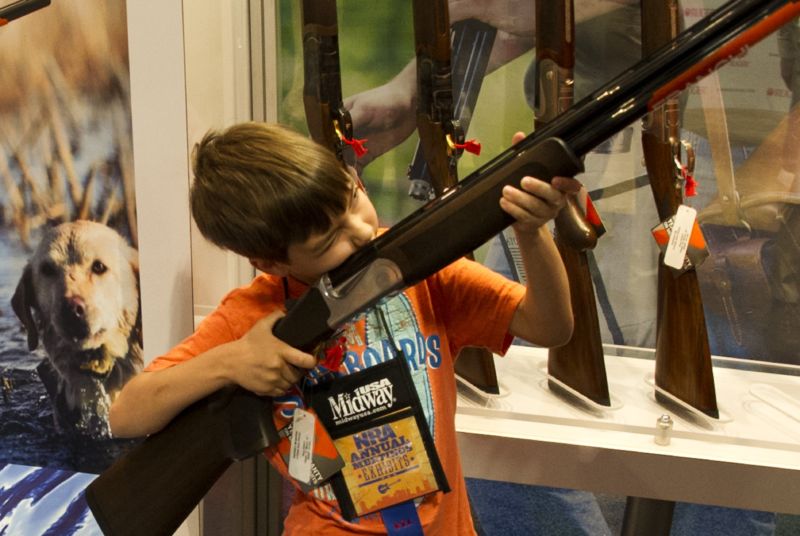
Nearly 1,300 children aged 0 to 17 are killed by gunshots each year in the US, and nearly 5,800 more suffer from non-lethal gunshot wounds, researchers estimate in a study published Monday in Pediatrics.
In all, about 19 children die or are wounded each day from firearms, either by homicide, suicide, or unintentional shootings. Firearm-related deaths are now the third leading cause of death among US children and the second leading cause of injury-related deaths, behind car crashes. The grim national statistics are even more startling when considered from an international perspective: the US now accounts for 91 percent of all child firearm-related deaths (aged 0 to 14) among high-income countries.
In addition to the broad figures compiled by researchers at the Centers for Disease Control and Prevention, the study also provides one of the most comprehensive looks yet at the factors surrounding those deaths and injuries.
For the study, researchers tapped into national databases on firearm deaths and nonfatal injuries, including data on gunshots from handguns, rifles, and shotguns. Information was scraped from death certificates, hospital reports, medical examiner reports, and law enforcement reports. The researchers also collected demographic data, such as sex, race/ethnicity, and age.
-
Firearm death rates among children aged 0 to 17 years, 2010–2014.Fowler et al.
-
Firearm homicide death rates among children aged 0 to 17 years, 2010–2014.Fowler et al.
-
These rates of firearm suicide are just for children aged 10 to 17 years.Fowler et al.
-
Fatal firearm injury rates by intent and year, children aged 0 to 17 years, United States, 2002–2014.Fowler et al.
The latest annual death estimate breaks down to: 53 percent from homicide, 38 percent from suicide, six percent unintentional, and the remaining three percent were either from unknown intentions or legal intervention. Boys made up 82 percent of those fatally shot, and older children (aged 13 to 17) were 12 times more likely to die from firearms than younger children (0 to 12).
African-American children had the highest overall rates of firearm deaths (4.1 per 100,000). But white and Native American children had the highest rates of firearm suicides (2.2 per 100,000 each).
While firearm homicides and unintentional fatal shootings appear to be declining recently, the researchers found that firearm suicide deaths have increased 60 percent between 2007 and 2014. This is in line with a larger nationwide trend in suicide increases, influenced by the economic downturn around 2007.Now more than ever, the data should be a call to action for pediatricians to discuss with parents how to best protect children, pediatrician Eliot Nelson of the University of Vermont, Burlington, wrote in an accompanying editorial. Though he cautioned:
“... Although we may legitimately support our American Academy of Pediatrics policy’s assertion that the safest home is one without firearms, we should be mindful that this message may be off-putting to parents who keep guns for hunting or self-protection, and who are part of a widespread and deeply rooted social gun culture in our country, especially in rural states. We do need to try to engage those gun owners.”
Nelson notes that the stakes can be particularly high for teenagers, who are often risk-takers and impulsive. Earlier research has suggested that teenagers spend 10 minutes or less debating suicide before making an attempt. Yet, suicide attempts with firearms are far more successful and irreversible than other methods.
When approaching parents, Nelson recommends that pediatricians note the unpredictability of teenagers and the craftiness of younger children, which parents may underestimate. Discussions should cover supervision and safe storage.
“However difficult it may be to confront the problem of firearm injuries in our children, youth, and families, we cannot ignore the magnitude of this ongoing public health crisis,” he concludes.
Pediatrics, 2017. DOI: 10.1542/peds.2016-3486 (About DOIs).
Reader Comments (665)
View comments on forumLoading comments...